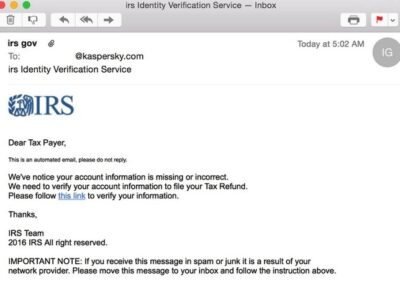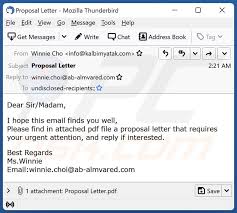Navigating the Web of Deceit
Protecting Yourself Against Email Scams
As our lives become increasingly digital, the threat of email scams looms large, with unsuspecting individuals falling prey to cunning tactics. This blog post aims to shed light on the insidious world of email scams, exploring common schemes, revealing red flags, and providing practical tips to empower individuals in protecting themselves from falling victim to deceptive emails.
The Anatomy of Email Scams:
Email scams come in various forms, from phishing attempts to elaborate schemes. This section dissects common email scams, highlighting their tactics and impact on unsuspecting recipients.
- Phishing Emails: Deceptive messages attempting to trick recipients into revealing sensitive information.
- Fake Invoices or Billing Notices: Emails impersonating legitimate entities to prompt financial transactions.
- Job Offer Scams: Bogus job opportunities luring individuals into providing personal or financial information.
- Impersonation Attacks: Emails mimicking trusted contacts to solicit funds or sensitive data.
- Prize or Lottery Scams: False claims of winning prizes, requiring upfront payments for processing.
Strategies to Protect Against Email Scams
1. Verify Sender Information:
- Check Email Addresses: Scrutinize sender email addresses for any anomalies.
- Verify Legitimate Contacts: Confirm the legitimacy of emails from known contacts through additional communication channels.
2. Look for Red Flags:
- Unsolicited Attachments or Links: Avoid clicking on links or downloading attachments in unsolicited emails.
- Generic Greetings: Scam emails often use generic greetings instead of personalized salutations.
3. Authenticate Requests:
- Financial Transactions: Verify any financial requests or transactions through official channels before taking action.
- Job Offers: Confirm job offers by directly contacting the company through established communication channels.
4. Use Security Measures:
- Activate Spam Filters: Enable spam filters on your email account to automatically filter out potential scams.
- Update Security Software: Regularly update antivirus and anti-malware software for enhanced protection.
5. Educate Yourself:
- Stay Informed: Familiarize yourself with common email scams and their evolving tactics.
- Security Awareness Training: Consider participating in security awareness programs to enhance your knowledge.
6. Report Suspicious Emails:
- Email Providers: Report suspicious emails to your email provider.
- Anti-Phishing Organizations: Contribute to the fight against email scams by reporting incidents to anti-phishing organizations.
The battle against email scams begins with informed and vigilant users. By verifying sender information, recognizing red flags, authenticating requests, using security measures, staying educated, and promptly reporting suspicious emails, individuals can fortify their defenses against the pervasive threat of email scams. Remember, a cautious and informed approach to email communication is the key to a secure digital experience.






